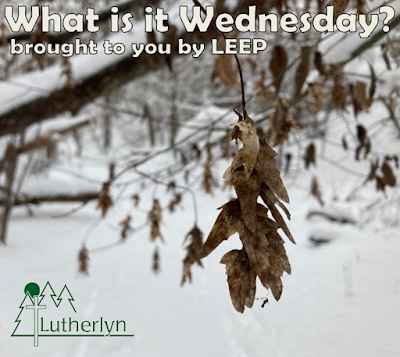Can
you identify what's in this photo?
Each Wednesday morning
on Camp Lutherlyn's Facebook page
the Lutherlyn Environmental
Education Program posts a photo.
Readers
have all morning and afternoon
to
make their best guess about what the photo is.
Around
6 pm LEEP provides the answer and a brief explanation.
Each
week's What is it Wednesday post
will
also be posted on the Nature of Lutherlyn blog,
after it is posted on Facebook,
sometimes
with additional bonus information.
In
addition to bringing you current editions of What is it Wednesday
on the
Nature of Lutherlyn blog,
we
will be reposting old editions,
creating
a What is it Wednesday archive.
This photo was posted as a What is it Wednesday on
January 19, 2022.
And
the answer is....
They may look like leaf clusters but they are not. These are
the protective sheathing that covered the seeds of the hop hornbeam. The papery
sheath has dried up and opened and the seeds have fallen out onto the forest
floor, and this is what is left behind. This was the female flower of the hop
hornbeam tree.
Hop hornbeam is a small understory tree (about 25-40 feet
tall) with soft flaky bark. It is named for its female flowers, which look like
the flowers of hop vines used in brewing beer. Like the similar but
smooth-barked American hornbeam (also known as musclewood or ironwood) hop
hornbeam has strong wood that was often used as tool handles in the past. In
fact, both hornbeams are sometimes referred to as ironwood because they both
have very strong, dense wood.
Some of the smaller details in the forest are more visible
now that we have a thick coating of snow – these seed capsules are a good
example, often they are less noticeable against a background of many types of
dead leaves. What will you notice if you go out in the forest in the snow?
Like and follow Camp Lutherlyn on Facebook, to see What is it Wednesday posts when they come out and have the opportunity to share your guesses in the comments!







